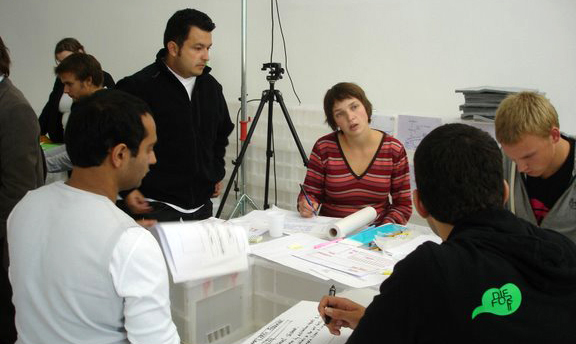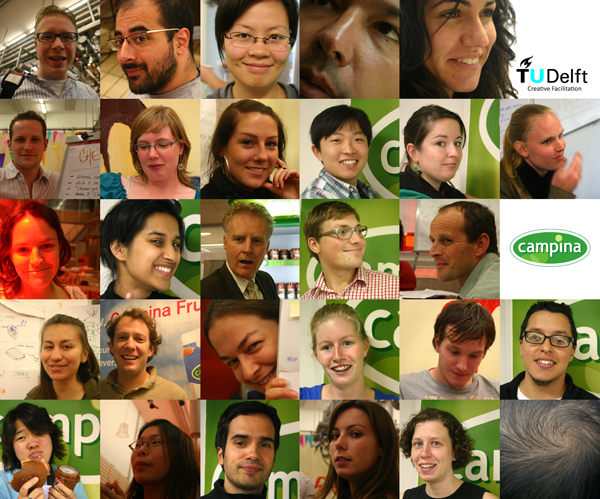Blog
Future Scenario (part 1): Barist, an imaginary country.
Future Scenarios (also called scenario planning, scenario thinking or scenario analysis) is a strategic planning method that some organizations use to make flexible long-term plans. The term scenario was introduced into planning and decision-making by Herman Kahn in the 1950s.
A scenario can be defined as: “A rich and detailed portrait of a plausible future world, one sufficiently vivid that a planner can clearly see and comprehend the problems, challenges and opportunities that such an environment would present.”
I.T.O. in the Dutch Design Week (part of the case study 3)
 Based on the final concept of my graduation project called ITO (Integral • Transport • O emissions) Motio Development is presenting its concept car: E-motio on the Dutch Design Week from October 17 through October 25 2009, Eindhoven the Netherlands.
Based on the final concept of my graduation project called ITO (Integral • Transport • O emissions) Motio Development is presenting its concept car: E-motio on the Dutch Design Week from October 17 through October 25 2009, Eindhoven the Netherlands.
Creative session (part 1)
 This category contains the summary and analysis of several “creative sessions” that the author has lead during his professional activity and the course “Creative Facilitation” as a part of the Strategic Design Master at Delft University of Technology. These posts include the background, methodology and procedure, results and conclusions of each case study. After several trials I consider that I have some level of expertise and I am plenty of interest in this topic, in order to improve my profile as a strategic & industrial designer.
This category contains the summary and analysis of several “creative sessions” that the author has lead during his professional activity and the course “Creative Facilitation” as a part of the Strategic Design Master at Delft University of Technology. These posts include the background, methodology and procedure, results and conclusions of each case study. After several trials I consider that I have some level of expertise and I am plenty of interest in this topic, in order to improve my profile as a strategic & industrial designer.
A creative session is a gathering of people who, following some steps and rules shaped by a facilitator (or organizer), let their creativity loose. Working together, in one or more teams, they eventually generate ideas for the subject in matter. The session doesn’t need to have very strict guidelines in order to work. As long as it is well organized most likely creativity and inspiration sooner or later emerge (Grudin, 2004)
Creative session (part 2): Future faculty workshop
After the fire in the Architectural building (TUDelft 2008) the association of students Stylos[1] arranged two activities in order to progress in the International competition to design the new building of the faculty. The starting point was the kickoff of the competition at Delft, including creative sessions to create the basic concept for the competition. After that the association arranged the international creative session in the 11 Mostra Internazionale di Architettura, La Biennale di Venezia at Venice, Italy.
International creative session in the 11 Mostra Internazionale di Architettura.
 Name: Concept for the new Faculty of Architecture TUDelft.
Name: Concept for the new Faculty of Architecture TUDelft.
Date: 11/09/2008 till 13/09/2008.
Duration: 3 days.
Place: 11 Mostra Internazionale di Architettura, La Biennale di Venezia at Venice, Italy.
Leader (facilitator): Ricardo Mejia S.
Client: Academic Stylos / Faculty of Architecture TUDelft.
Problem owner: Faculty of Architecture TUDelft.
Participants: not available.
Creative session (part 3): Campina
Creative Facilitation is about setting up and leading creative processes in product innovation teams[1]. The course Creative Facilitation contents describe the role of the facilitator as a leader of a creative team during a “Creative Session” in order to achieve a specific goal. For that process the course provides some theoretical reflections, including lectures, readers and discussions about techniques of design, lead and participate in creative processes.
Starting with theory, the course moved into guided exercises which gradually grow in complexity and scope (Delft University of Technology, 2007). Including other activities in the end of the course the student has a totally of two creative sessions, one as an internal session and the other as an external one. In my particular case I had a previous experience using some basic methods of creativity, like brainstorming and lateral thinking, including mind maps and some ice breakers but the course was an excellent exercise to grow in the comprehension of how this methods and other more can improve the quality of the new product development processes.
[nggallery id=11]
[1] (Delft University of Technology, 2007)
Javier Ricardo Mejia Sarmiento


